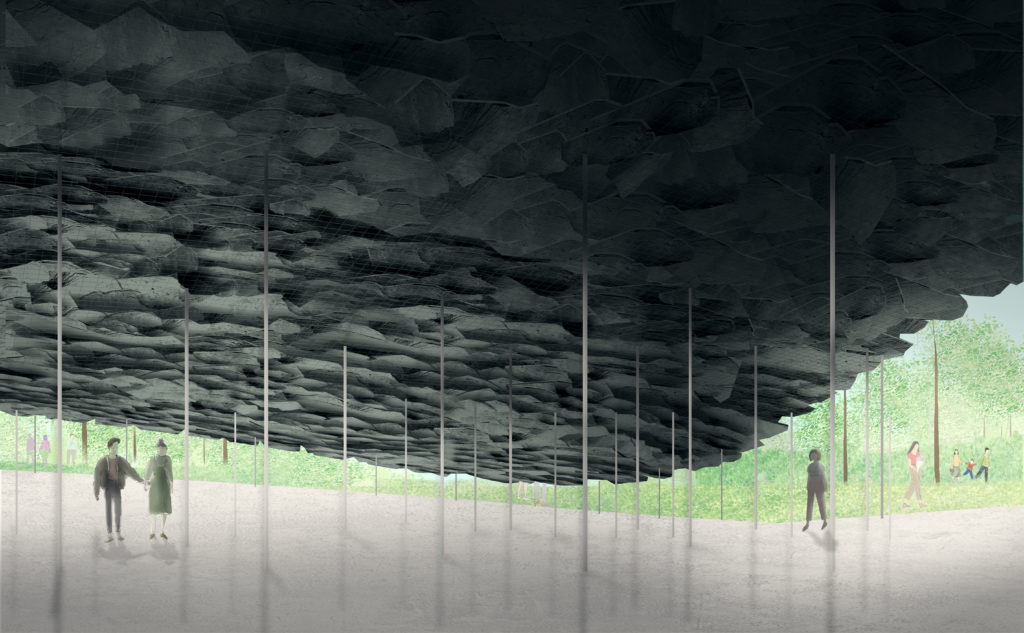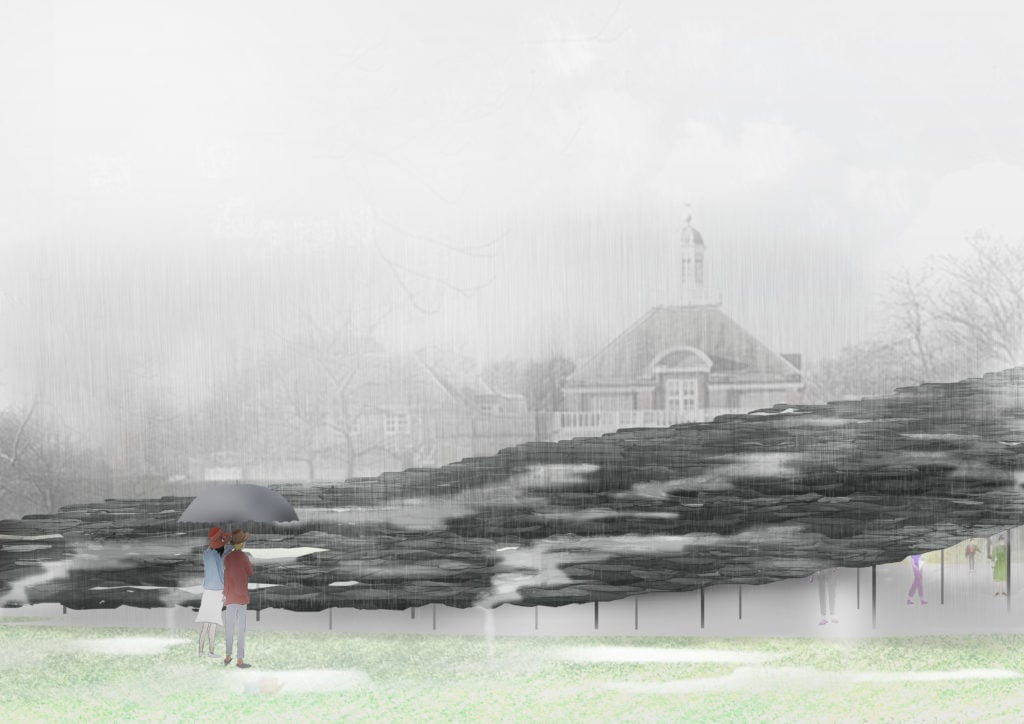Art & Exhibitions
Japanese Architect Junya Ishigami Plans to Defy Gravity With His 2019 Serpentine Pavilion
The architect, who won the Golden Lion at the Venice Architecture Biennale in 2010, wants to create a "hill made out of rocks" in Hyde Park.

The architect, who won the Golden Lion at the Venice Architecture Biennale in 2010, wants to create a "hill made out of rocks" in Hyde Park.

Artnet News

The Japanese architect Junya Ishigami has been selected to design the Serpentine Pavilion in Hyde Park this summer. The temporary structure, which the Serpentine Gallery has erected every year since 2000, has become one of the world’s most prominent architectural commissions.
Ishigami is known for designs that defy gravity and reflect the natural world. For the Serpentine Pavilion, he says he will create “a hill made out of rocks” by arranging dark gray slates into a single canopy that appears to emerge from the ground. “Possessing the weighty presence of slate roofs seen around the world, and simultaneously appearing so light it could blow away in the breeze,” he said in a statement, “the cluster of scattered rock levitates, like a billowing piece of fabric.”

Junya Ishigami’s Serpentine Pavilion 2019, Design Render, Interior View, © Junya Ishigami + Associates.
Ishigami founded his eponymous architectural firm in 2004 after a stint working for the Tokyo-based firm SANAA. He won the Golden Lion at the Venice Architecture Biennale in 2010 for his design of a kindergarten with cloud-shaped walls and was recently the subject of a solo exhibition at the Fondation Cartier in Paris. He is the fourth Japanese artist to receive the coveted commission in its 19-year history.
Ishigami’s projects seek to evoke a sense of childlike wonder. “Imagine how the world would seem if you were a really tiny person, like an elf,” he told the Guardian last year. “If we forget everything we know, just imagine how many more kinds of architecture there could be.”

Junya Ishigami’s Serpentine Pavilion 2019, Design Render, Exterior View, © Junya Ishigami + Associates.
The pavilion will accompany two highly anticipated exhibitions at the Serpentine this summer: solo shows of work by 97-year-old California painter Luchita Hurtado and New York-based painter, quilt-maker, and writer Faith Ringgold. The museum will also present—virtually, anyway—a winning submission for an unrealized project through a new program called Serpentine Augmented Architecture, developed in collaboration with Google Arts and Culture.
The pavilion will debut on June 20 and remain open until October 6.